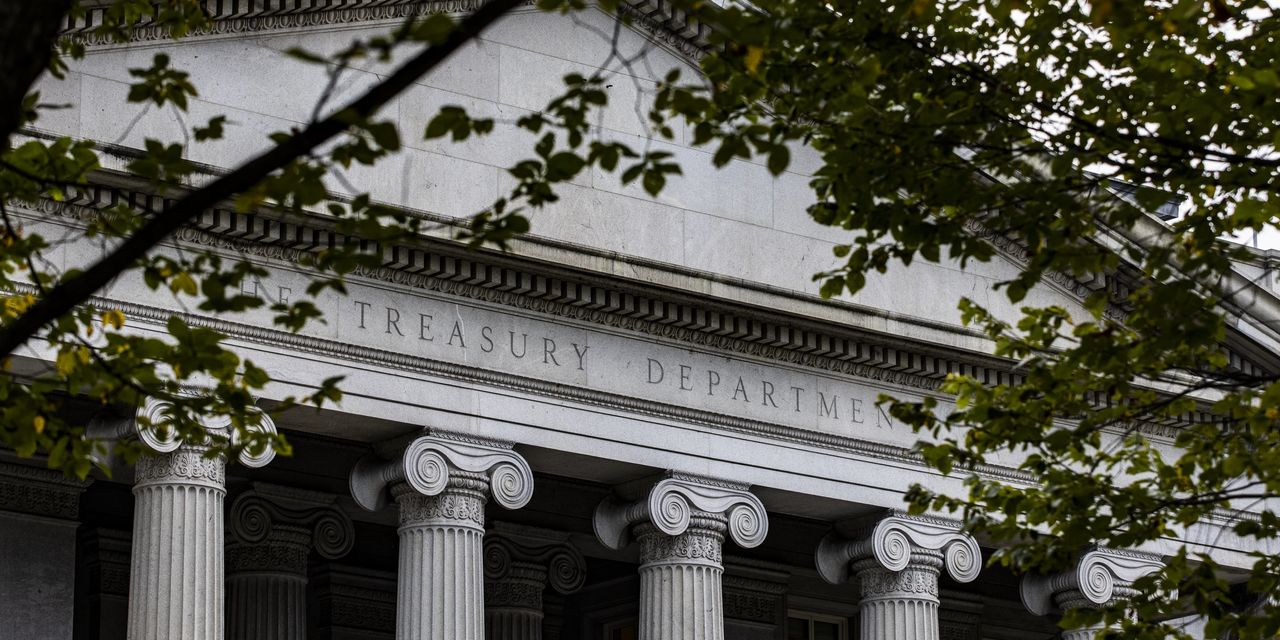
The U.S. incurred the second-largest budget deficit on record in the fiscal year that ended Sept. 30, reflecting government expenditures tied to the coronavirus pandemic and adding fuel to congressional debates about proposed spending.
The $2.8 trillion deficit was the second largest since 1945 as a share of the nation’s gross domestic product and trailed only the prior fiscal year’s $3.1 trillion shortfall, when not adjusting for inflation.
The deficit for the fiscal year was 12.4% of all economic output, down from 15% the previous year, the Treasury Department and Office of Management and Budget said Friday. The deficit was 4.6% of GDP in the 2019 fiscal year, before the pandemic began.
Government outlays for 2021 fiscal year rose 4% from the previous year to $6.8 trillion. Federal revenue increased 18% from the prior year to just more than $4 trillion, largely due to higher receipts from individual and corporate income taxes during a year of strong economic growth.
Spending in the most recent fiscal year was boosted by pandemic-related costs that included monthly child tax credits, expanded unemployment compensation, emergency small-business loans and stimulus checks to households.
In a statement, Treasury Secretary Janet Yellen called the new data “further evidence that America’s economy is in the midst of a recovery.”
Total federal borrowing from the public increased by $1.3 trillion during the most recently completed fiscal year to $22.3 trillion, the government agencies said. As a share of the economy, borrowing from the public fell to 99.5% of GDP at the end of fiscal year 2021 from 100.3% of GDP at the end of fiscal year 2020.
“Last year’s borrowing was absolutely massive—largely justified, but massive nonetheless,” said Maya MacGuineas, president of the bipartisan Committee for a Responsible Federal Budget. “We must recognize that borrowing makes sense during emergencies, but this cannot become the new normal.”
Ms. MacGuineas noted that the U.S. still faces an aging population, rising healthcare costs and large structural deficits that will put added pressure on future debt levels.
The Biden administration has argued that the worst public health crisis in a century has required expansive government spending to address both medical needs and the economic fallout.
As a share of GDP, government revenue rose to its highest level since the 2001 fiscal year. That gain was driven by two factors.
Economic output rose at a historically fast rate during the past 12 months after contracting in the prior fiscal year, when swaths of businesses were closed due to the pandemic. Stronger growth as the economy emerged from those shutdowns translated into larger tax receipts.
Revenue may have also increased this year as businesses and individuals prepared for potential tax increases. Income realized in 2021 could be lower taxed than income in 2022, giving taxpayers an incentive to incur taxes now rather than later.
The government’s spending surge helped propel a rapid recovery from the pandemic-induced economic slump, but also helped send the federal debt—as a proportion of the economy—soaring to levels not seen since the end of World War II.
Both Republicans and some key centrist Democrats have said the government shouldn’t spend too much right now, a top reason why President Biden’s ambitious $3.5 trillion legislative agenda to expand the social safety net and boost green energy is expected to significantly shrink in size. Democrats have also debated how much the package should be offset by new revenue versus deficit spending; Mr. Biden has said it won’t increase projected deficits.
The nation’s debt has been marching upward since the fiscal crisis at the end of George W. Bush’s administration and the start of Barack Obama’s presidential tenure. Former President Donald Trump also ushered in spending programs and tax cuts that widened the gap sharply even before the coronavirus crisis.
Budget deficits typically widen during economic downturns, but they have been climbing in the U.S. for the past six years, despite strong economic growth during much of that period. Interest rates, however, have remained historically low, so the government’s costs to finance that borrowing has been constrained.
Earlier this month, Congress and President Biden approved raising the U.S. borrowing limit by enough to pay the government’s bills into early December, setting up a fresh battle in the coming months. Raising the debt ceiling doesn’t authorize new spending, but it does allow the government to meet existing obligations.
If Congress doesn’t raise the debt ceiling later this year, the government would have to suspend payments to beneficiaries or delay interest payments, which would constitute a government default.
—Richard Rubin contributed to this article.
Write to John McCormick at [email protected]
Copyright ©2021 Dow Jones & Company, Inc. All Rights Reserved. 87990cbe856818d5eddac44c7b1cdeb8








